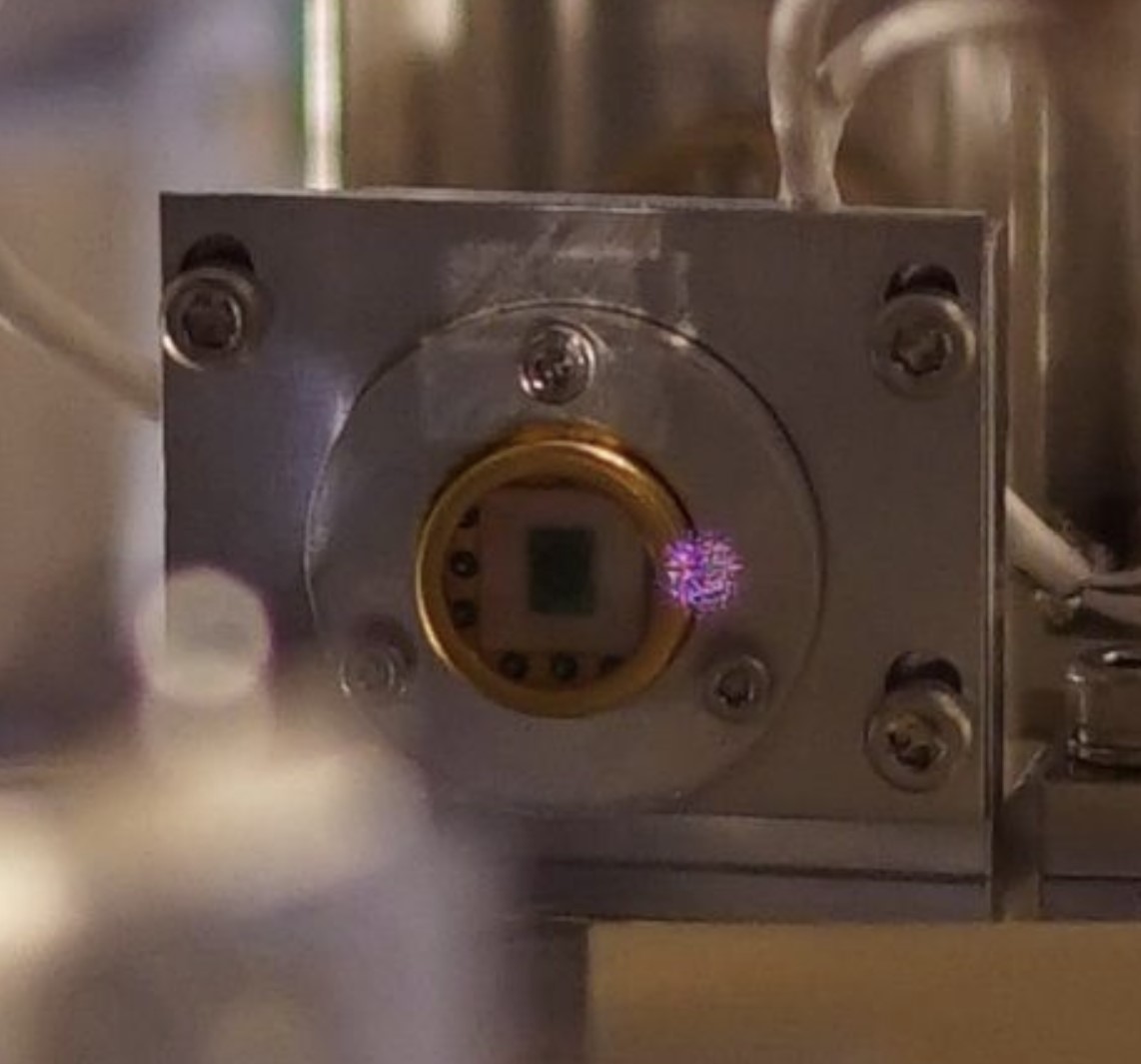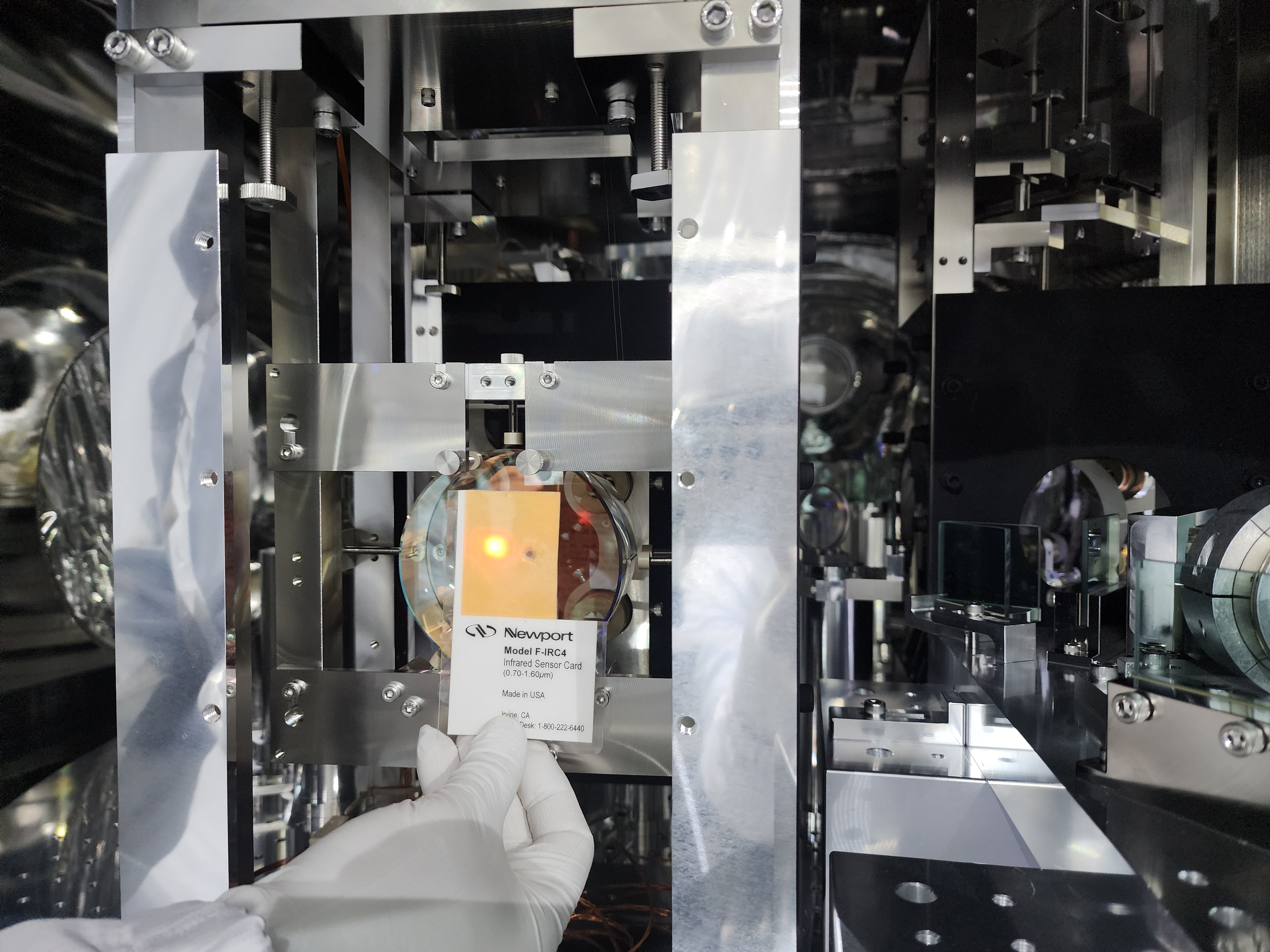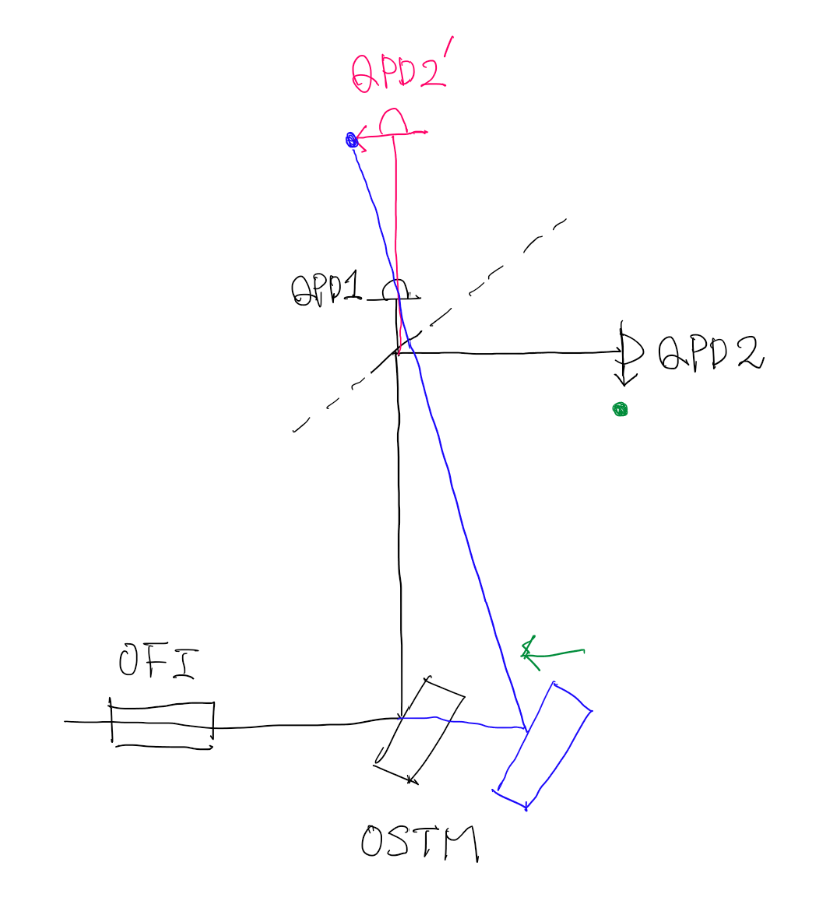Takahashi, Washimi, Michael, Logan, Aso
Summary
The AS beam is introduced to the OMC. QPD1 is centered. QPD2 is centered in Pitch but miscentered by a few mm in Yaw.
Procedure
The alignment work was done with the X-arm locked and ITMY misaligned.
When the laser power was increased to 8W, X-arm was not locked (single bounce by ITMX).
SR2 alignment
We used the aperture iris in the OMMT chamber as a reference for the SR2 alignment.
First, we set the opening of the iris to be ~3mm diameter. Then we moved the SR2 in pitch and yaw while watching the power detected by the PD behind the iris. SR2 was set to the orientation to maximize the power on the PD.
We accepted the new set point values of the SR2 OpLev DC loops in SDF.
OMMT1 alignment
We aligned the OMMT1 to center the OMMT2 trans QPDs.
Since the OMMT2 transmission is extremely weak, we increased the IMC transmission power to ~8W.
With the ceiling light turned off, we were able to see the transmitted beam.
Since the beams were largely miscentered in Yaw, we rotated OMMT1 frame with a pusher.
This is because we did not want to use the picomotor, which will change the OSEM offset.
For pitch, we had to use the picomotor. Fortunately, the required adjustment was small. So the OSEM DC values remained good.
OMMT2 alignment
We checked the beam at the input of the OFI.
It was almost perfectly centered in Yaw, but shifted by a few mm in Pitch.
So, we used the OMMT2 picomotor to center the beam on the OFI.
Alignment of OMC with OSTM
Since OSTM was re-suspended, the beam going to the OMC was largely missing the target.
We rotated the OSTM in Yaw with a pusher.
For Pitch, we had to use the picomotor.
We were able to hit the center of QPD1 with the above adjustment.
In this state, the beam on the QPD2 is almost perfectly centered in Pitch, but miscentered in Yaw by a few mm.
Since we had to move the OSTM picomotor in Pitch by a lot, the OSEMs are now out of range.
We need to re-adjust the OSEM positions tomorrow.
Next step
We are planning to shift the position of OSTM with a pusher.
Combination of the shift and rotation of OSTM should allow us to center both QPD1 and QPD2 at the same time.




